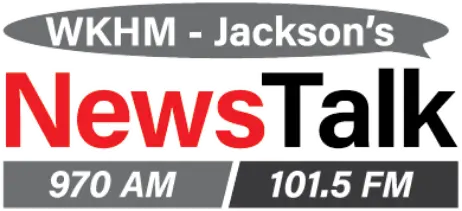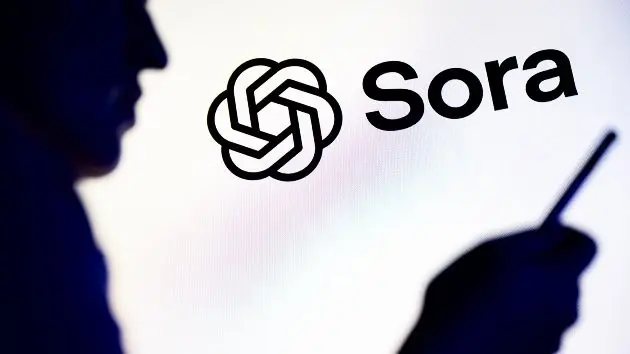(NEW YORK) — Just a week before repayments on federal student loans were scheduled to resume after a two-year pause, President Joe Biden on Wednesday announced a sweeping new policy to cancel debt for millions of Americans and reform the payment process going forward.
Students who attended college on Pell grants — federal dollars awarded to low-income students who can only contribute a certain amount toward their tuition — will owe up to $20,000 less on their federal loans if they make under $125,000 per year. And non-Pell borrowers making less than $125,000 will owe up to $10,000 less on their federal loans.
The president is also adjusting how much borrowers will have to pay each month and is extending the federal pause on repayments until the end of the year.
And while borrowers should keep their eyes peeled for specific details from the Department of Education (DOE) over the next few days and weeks, here is everything to know so far:
Who will this help?
Biden’s plan will erase at least $10,000 in federal student loan debt for Americans who made less than $125,000 per year in the 2020 or 2021 tax year, or less than $250,000 as a household.
For Americans under that same income bracket who took out Pell grants to pay for college, it would erase an additional $10,000 in debt, bringing the total forgiveness up to $20,000.
The income cap refers to adjusted gross income, a DOE spokesperson told ABC News, referring to income that already excludes retirement plan contributions, alimony and certain other expenses.
Current students are also eligible for federal loan forgiveness, so long as their parents meet the income criteria of $125,000 for a single provider or $250,000 for a married couple who file their taxes jointly.
The forgiveness applies to anyone who took out their loans before July 2022.
In a speech on Wednesday, Biden said 95% of borrowers will get some relief from his plan, or a total of 43 million out of the 45 million total student borrowers.
Nearly 45%, or 20 million people, will have their debt fully canceled, he said.
DOE data shows that erasing even $10,000 of debt could settle the balances of about one-third of federal loan borrowers. An analysis from Princeton University and the University of California at Merced that incorporated incomes found the same.
And for the other half of borrowers who will still have loans to continue paying down, Biden said the DOE would be modifying the terms.
The minimum required monthly payments for undergraduate loans will be cut from 10% down to 5% of peoples’ discretionary income, while the amount of income that is considered non-discretionary — or protected from repayment — was raised to guarantee that no borrower who is making around the annual equivalent of a $15-an-hour minimum wage will have to make monthly payments.
The plan will also ensure that people who took out an original loan of $12,000 or less will have their balance forgiven after 10 years of payments, which was brought down from the initial timeline of 20 years.
The DOE estimates that this change will allow community college graduates to be debt-free within 10 years.
“I think the administration is structurally attempting to fix many of the problems that have plagued the inconvenient payment system. Whether or not it gets the job done is going to depend on the details,” said Persis Yu, policy director and managing counsel for the Student Borrower Protection Center, a leading advocacy organization focused on alleviating student debt.
When will debt cancellation kick in?
Some borrowers will immediately qualify for debt cancellation. But more than likely, it will take months for the vast majority of borrowers, experts told ABC News.
In a briefing with reporters on Wednesday morning, the White House said the DOE would release details on the process in the coming days.
Some people will need to submit a “simple application” on studentaid.gov showing that they meet the income caps, a White House official said, while about eight million people will see their debt canceled automatically because the DOE already has their info on hand.
But because the DOE does not have income data for the other two-thirds of borrowers, they will need to receive authorization from those borrowers to obtain such data from the Internal Revenue Service — or borrowers will have to certify their income under penalty of perjury, financial aid expert Mark Kantrowitz told ABC News in an interview.
“So you might have some borrowers getting forgiveness within a month or two, immediately, and then some borrowers taking a few additional months and they would have to complete that form,” Kantrowitz said.
“One thing I recommend all borrowers do is make sure your contact information, your mailing address, your email address or telephone numbers are up to date with your loan servicer and on the studentaid.gov website,” Kantrowitz said.
At a briefing later Wednesday, Susan Rice, Biden’s domestic policy adviser, told reporters that “anybody can go today to studentaid.gov and provide their email address and they will be notified when the website is available for people to fill out a very simple short form attesting to their income and become eligible.”
But just how “simple” the application is for people, and how many people know about it, is a subject of concern for debt-relief advocates who think a complicated process could keep people from taking advantage of the new policy.
“There’s a lot of low-income folks who will never learn about this application. They will not be able to figure it out, they won’t have the resources available to navigate the bureaucratic process,” Yu said. “And so in imposing this hurdle, we’re actually putting in a barrier for the folks who need it the most.”
The solution, Yu argued, would be a broad cancellation that does not try to target people based on their income, which would make the process easier to execute by the DOE.
How much will this cost the government?
A recent study by the University of Pennsylvania’s business school found that erasing $10,000 in student loan debt will cost about $300 billion. If the program continues for 10 years, the cost becomes $330 billion, or $344 billion if there is no income limit, per the report.
The changes to the monthly loan payments will also affect the cost, but the White House declined to give specifics on Wednesday, saying only that the cost would be spread over time and would be difficult to estimate.
“It’s fairly complicated, as a process, for determining the cost implications,” a White House official said.
Because the federal government backs many student loans, U.S. taxpayers will likely foot the bill — something Biden addressed directly on Wednesday by comparing student debt cancellation to the Paycheck Protection Program, a loan forgiveness program for businesses affected by the COVID-19 pandemic.
“No one complained that those loans caused inflation. A lot of these folks in small businesses are working in middle-class families. They needed help. It was the right thing to do,” Biden said.
“So the outrage over helping working people with student loans, I think is just simply wrong, dead wrong,” he said.
He also pushed back against Republicans who he pointed out, under former President Donald Trump, passed a massive tax cut that benefited many wealthy Americans and corporations, with the GOP arguing the move aided the economy.
In contrast, Biden said Wednesday, his plan would benefit the “middle class and working families. It helps both current and future borrowers. And it’ll fix a badly broken system.”
Does this policy fulfill Biden’s campaign promise?
While the president did pledge to cancel $10,000 in student loan debt on the trail — a commitment he has now made good on — that was just one of his vows around reforming the higher-education system.
Many critics who want to see Biden do more have pointed out that as a candidate he also proposed forgiving all tuition loan debt from undergraduate students that earn less than $125,000 per year and who attended two- or four-year public colleges, as he wrote in a 2020 Medium article.
“The federal government would pay the monthly payment in lieu of the borrower until the forgivable portion of the loan was paid off. This benefit would also apply to individuals holding federal student loans for tuition from private HBCUs and MSIs,” Biden wrote then.
That pledge led some progressives to commend the progress so far but still call for more.
“While not as high as we called for, this crucial step from the President keeps his campaign promise and responds to calls from the CPC, the Black Caucus, the Hispanic Caucus, and millions across the country to address the crippling issue of student debt,” the Congressional Progressive Caucus said in a statement on Wednesday.
Yu, with the Student Borrower Protection Center, also applauded the move — but said it would be important to watch the rollout with a critical eye.
“We’re very excited to see him take this bold action, which is one of the things he’s promised,” Yu said.
But because Biden pledged debt cancellation for all, while the current policy is tailored to people under a certain income, Yu said the positive impact remains to be seen.
“I think really the test will be like: Are we able to get this relief to all of the borrowers who are eligible for it? That will be the real test of whether or not he’s kept his campaign promise,” Yu said.
With midterm elections roughly two months away, it also remains to be seen if erasing federal loan debt for some borrowers could bolster Biden’s underwater approval rating.
The plan is also likely to face pushback from those who opted not to attend college altogether because of the cost of doing so.
To that end, the new policy also stipulates that borrowers who meet the income requirements and recently paid off their loans can request a $10,000 refund or the total of payments made since March 13, 2020.
Copyright © 2022, ABC Audio. All rights reserved.


